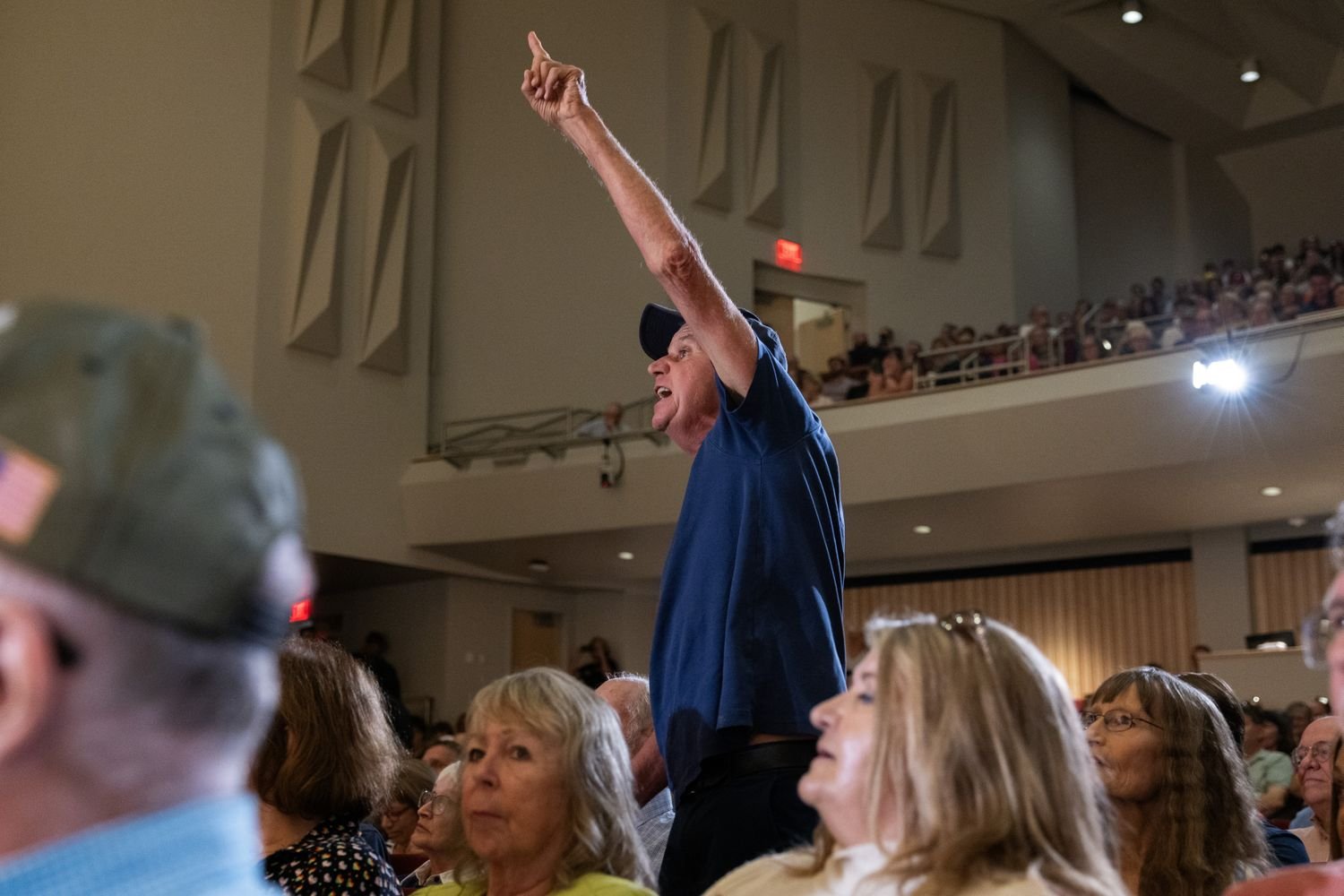:max_bytes(150000):strip_icc():format(jpeg)/GettyImages-2228037969-ddcdabb986fc4428975dbfd48942782c.jpg)
Several clips from Congressman Mike Flood of Nebraska’s latest town hall have gone viral this week, including one where the crowd criticizes the Republican’s responses to questions about health care, saying the U.S. “can’t afford” programs like expanding health care access. Here’s what the numbers say about his answer.
Key Takeaways
- Republican Congressman Mike Flood of Nebraska faced voters in a Monday town hall that featured several contentious exchanges.
- The audience was critical of some of Flood’s answers to questions, including that the U.S. “can’t afford” things like expanding Medicare.
- Estimates have varied for what a “Medicare for All” program would cost.
What Rep. Flood Told Constituents This Week
Flood held a town hall on Monday evening, which drew a mix of supporters and critics. The congressman fielded a variety of questions about his support of President Trump’s recently signed tax and spending bill, as well as the topics of immigration and health care.
In clips that spread across social media, Flood received a resounding “yes” when he asked the crowd if they thought that “people who are 28-years-old, that can work, and refuse to work should get free health care,” and was later booed for saying “we can’t afford that” when asked if he would support expanding the age ranges eligible to receive Medicare.
What The Numbers Say
About 62% of the people polled by Gallup said that ensuring Americans have health care should be a responsibility of the federal government. That’s down from a high of 69% who said so in 2006, but well above a low of 42% in 2013, as the public has progressively shifted back to thinking the government should play a role in health care over the last decade.
The New York Times in 2019 compiled estimates from several major groups, and at the time estimated that a Medicare for All program would cost anywhere from $2.76 trillion to $3.87 trillion, compared with the $1.4 trillion the government actually spent on Medicare and Medicaid combined in 2019.
Important
In 2019, the average of the different estimates for the cost of Medicare for All reviewed by the New York Times, $3.3 trillion, would have been about 15.2% of gross domestic product (GDP). That’s less than the percentage of GDP for both private and government health care spending that year, 17.5%, even as 10.3% of Americans were uninsured at the time.
In December 2020, the Congressional Budget Office (CBO) projected that under a single-payer system, total “federal subsidies for health care,” a combination of spending and missed revenue from “tax preferences for health benefits,” would be between $1.5 trillion and $3 trillion higher by 2030 than under current programs. So far this year, U.S. Treasury data shows that the government has spent about $1.2 trillion on Social Security, and about $1.4 trillion combined on Medicare and other health programs.
Another CBO paper from early 2022 estimated that the shift in overall economic output would range from 0.3% lower to 1.8% higher on average over the first 10 years of a single-payer system, predicting that workers would use the money saved from lower health care costs to take more vacation time and spend in other areas.
The Bottom Line
The viral town hall exchange highlights the ongoing national debate over health care affordability and government spending. While Rep. Flood argued the U.S. “can’t afford” Medicare expansion, the numbers tell a more complex story. Various estimates suggest Medicare for All would cost significantly more in direct government outlays, but would represent a smaller percentage of GDP than our current system while covering those who are uninsured.
